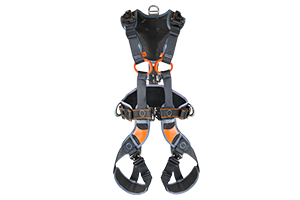
Watch the How to Measure a Harness video:
heightec manufacture Height safety harnesses for every type of work at height, fall arrest and rescue. This How to Measure a Harness video demonstrates the best practise for measuring for a full body heightec harness.
Click on the link below to view heightec’s harness size guide and our harnesses:
heightec’s newest harness to be added to their range is the Helix Climber’s Harness
The new HELIX climbers harness features a unique design prioritising comfort, fit and function for an unrivalled range of user sizes. The HELIX is gender-inclusive, meaning it can be adjusted to fit both male and female body types.
Maximum adjustability:
- Uniquely tailored to accommodate all body types with five points of adjustment ensure an exceptional fit in shoulder, waist, leg, hip and back ensuring symmetry, perfect for extended use.
Ultimate support:
- Breathable low profile back panel, padded waist and leg pads provide support and protection when climbing.
- Lightweight back panel helps hold the harness in shape, protects the webbing beneath, reduces tangling and aids orientation when fitting, whilst still enabling access for inspection.
- Padded waist belt provides support and is fitted with two side D’s for work positioning. Side D’s can be folded back to reduce snagging when not in use.
Gear loops are positioned to reduce snagging risks when climbing and provide easy access, management and organisation of tools.
Webbing Retainers:
- Retainers on strap ends allow excess webbing to be stowed away, neatly and easily.
Attachment points:
- Versatile front attachment point allows for sliders, inertia reels and fall arrest lanyards. Textile chest loops are highly visible for easy location in emergencies. The low profile design aligns webbing and reduces bulk, ensuring a precise fit for maximum comfort and security. Sliding leg comfort pads enable ideal positioning.
- High rear attachment point is positioned at the nape of the neck above the contoured shoulder pad to eliminate discomfort when climbing. This high point ensures a more vertical orientation of the casualty when lowering during rescue and reduces risk of interference with ladder rungs.